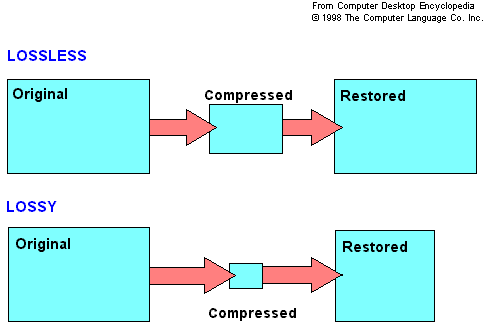
A team of researchers from Khalifa University has designed and developed a memristor-based image compression architecture to speed up image transfer while also making the devices using this technology smaller and more energy efficient.
Read Arabic story here: http://www.researchku.com/news-8-extended.php?id=8
In the time of unlimited data phone plans, it’s easy to forget that we were once constrained by how much data we could consume or produce. According to Domo’s Data Never Sleeps 8.0 report, it is estimated that every minute around 350k stories and 150k photos are posted on Instagram and Facebook. Moreover, Zoom hosts around 208,333 meeting participants in just one minute.
These days, sending or receiving pictures of anything and everything is almost instantaneous and we rarely spare a thought for just how much power it takes to send them.
It is becoming an integral part of mobile phones’ and other communication devices’ operating systems to have image compression technologies, such as HEIF (high-efficiency image format) to help with image transfer. This has resulted in giving more attention to research in the areas of image compression.
For example, how to advance the technology when it comes to sending images in urgent situations, such as in smart healthcare, or from the furthest corners of our universe as we explore new worlds via satellites. Another area of research can be impact of reducing the image data size on its storage requirements and eventually on the energy and time required to send it via communication channels.
A team of researchers from Khalifa University has investigated a memristor-based image compression architecture to speed up image compression while also making the devices using this technology much smaller and more energy efficient.
The team comprised Dr. Yasmin Halawani, Post-doctoral Researcher, Dr. Baker Mohammad, Associate Professor, Dr. Mahmoud Al-Qutayri, Professor, all from the System-on-Chip Lab and Department of Electrical and Computer Engineering at Khalifa University, and Dr. Said Al-Sarawi from the Center for Biomedical Engineering at the University of Adelaide, Australia.
Dr. Halawani explained in her doctoral thesis that today’s devices are “jam-packed with a variety of sensors, which are collectively expected to generate more than 40 zettabytes in 2020.” That’s one billion terabytes of data or one trillion gigabytes.
“This huge amount of generated data needs to be processed at a fast rate using complex algorithms to interpret the information,” explained Dr. Halawani. “This is computationally demanding, but Internet-of-Things devices tend to be energy-constrained and have limited resources, so innovative architectures and technologies that enable efficient computation are needed.”
Conventional computing faces serious challenges in overcoming these constraints.
“At the device level, technologies are fast approaching their physical and power limits, while at the architectural level, there are limits to computing throughput that we have yet to solve,” explained Dr. Halawani.
A wide range of emerging memory technologies has been investigated to address these challenges, including resistive random access memory (ReRAM), which is a promising technology for building efficient in-memory computing (IMC) architectures, thanks to its ability to perform both storage and computation in the same physical device.
One such ReRAM device is the memristor. A memristor device consists of metal oxide sandwiched between two electrodes. It has the ability to change its resistance state under the application of suitable voltage. As the name implies, the memristor can remember its last written state, even if power is turned off, which offers great potential for use as a solid-state computer memory device.
Unlike traditional solid-state storage technologies, memristors require less energy to operate, last longer, and store at least twice as much data. They use brain-inspired architectures that allow them to perform in-memory computing. This solves a big issue in traditional computer architectures, referred to as the memory wall, by eliminating the need to move data from memory to the processing unit in order to perform computing functions.

Memristors employ a crossbar architecture, which involves multiple inputs connected to multiple outputs in a matrix design. This design can speed up the multiply and add operations found in many digital signal processing algorithms in a smaller device using less power.
“When these ReRAM devices are built in a crossbar architecture, they can offer significant savings in energy, area and execution time,” said Dr. Halawani. “Plus, the low power requirement makes them an ideal candidate for resource-constrained Internet-of-Things applications.”
All very helpful for the mobile devices that are part of the Internet-of-Things, especially so given the zettabytes of data to be processed that are multimedia in nature, which is both computationally and energy demanding.
“Image exchange in the Internet-of-Things is essential in various applications, including smart healthcare, smart structures monitoring and transportation,” explained Dr. Halawani. “Although there are compression algorithms to help reduce storage area requirements and data transmissions between the devices, they are computationally intensive. Our research uses analog, in-memory computing for image compression utilizing emerging RRAM technology.”
Much as data compression is the process of modifying, encoding or converting the bits of data in such a way that it consumes less space on a disk, image compression is the “art of removing redundant data for efficient storage and transmission of information,” according to Dr. Halawani.
“The compression is achieved by reducing the correlation between neighboring pixels, spectral bands, or different frames in a video. This process is computationally intensive as it involves many matrix manipulation operations and can result in either lossy or lossless compression that trades off image quality for a higher compression ratio.”
As memristors form a potential building block for in-memory computing, their arrangement in a crossbar could mean devices can be made as much as 154 times smaller compared to previous technologies, while offering double the energy savings. The team’s proposed architecture involves a single computational crossbar to perform the compression task.
They focused on image compression during the image capture phase, with their system delivering a high image quality and a high processing rate, while reducing storage needs.
The success of this novel research and technology has led to the issuance of a patent in the United States with a number 10,735,753 and titled “DATA COMPRESSION USING MEMRISTIVE CROSSBAR,” with the architecture offering huge potential in Internet-of-Things devices, ranging from cameras in the everyday smartphone to the highly sophisticated imaging devices used in healthcare, and even space exploration, to send images of the cosmos back to Earth.
Jade Sterling
Science Writer
2 November 2020






